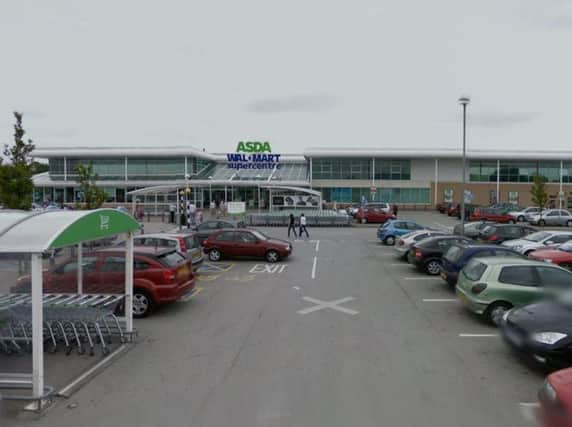UPDATED: Asda vows to fight back after torrid 2016


The Leeds-based firm saw sales drop 3.2 per cent to £21.7 billion in the year to December 31, while pre-tax profits fell almost 19 per cent to £791.7 million.
Like-for-like sales also fell by 5.7 per cent, according to accounts filed at Companies House. Asda has reported 11 consecutive quarters of sales declines during a period of intense competition in the sector.
Advertisement
Hide AdAdvertisement
Hide Ad“The grocery market has continued to experience low growth throughout the year and competition in the sector has remained intense.
“Our sales performance, relative to the market, was behind our expectations,” the company said.
However, Asda added that despite the disappointing results, there are signs that turnaround efforts under new boss Sean Clarke are beginning to bear fruit.
The Walmart-owned group pointed to the final quarter of 2016, when it said improvements in ranges and price cuts were paying off.
Advertisement
Hide AdAdvertisement
Hide AdMr Clarke, who took up the reins last summer after being parachuted in to replace previous boss Andy Clarke, has slashed the prices of everyday items as he attempts to arrest falling sales.
The chain reported a 2.8 per cent fall in like-for-likes sales in its first quarter of this year, a moderate improvement on the previous period, which saw sales fall 2.9 per cent.
Last August, Asda posted its worst ever quarterly sales fall of 7.5 per cent. Asda’s share of the market fell 0.9 per cent to 15.7 per cent last year, according to Kantar.
All of the so-called Big Four supermarkets, Tesco, Asda, Sainsbury’s and Morrisons, have suffered as German discounters Aldi and Lidl have increased their market share.
Advertisement
Hide AdAdvertisement
Hide AdAsda’s underlying operating profit decreased by 11.5 per cent to £1.18bn in 2016, from £1.22bn in 2015. An Asda spokesman told The Yorkshire Post that the profit fall in 2016 was directly linked to the decline in sales, particularly in the first half of the year.
The spokesman added: “Since Q3 (third quarter) last year, sales have continued to fall albeit to a lesser extent.
“You can see from the latest Kantar (Worldpanel) data that sales have started to grow again.”
The spokesman said that while Asda was beginning to see growth, it was still behind the market “so we’re not resting on our laurels”.
Advertisement
Hide AdAdvertisement
Hide AdThe spokesman said: “The board – led by Sean Clarke as CEO and Roger Burnley as deputy CEO – has got everyone in the company focused on the basics. Shop by shop, range by range, improvements have been made – and continue to be made – whether price, quality or service.
“We’ve been getting better for customers, and they are beginning to respond positively, but there’s much more to do.
“Asda remains a strong business,” the spokesman added. “No-one would say that we’re proud of 2016 but profits exceeding £1bn and a cash flow increase of 8 per cent clearly demonstrate our financial strength and are measures of Asda as a well-managed business.”
Asda can trace its roots back to the 1920s, when a group of Yorkshire dairy farmers joined forces to form Hindell’s Dairies.
Advertisement
Hide AdAdvertisement
Hide AdAfter a series of acquisitions, the name was changed to Associated Dairies & Farm Stores Ltd in 1949 in Leeds.
The adoption of the Asda name occurred in 1965, with the merger of the Asquith chain of three supermarkets and Associated Dairies.